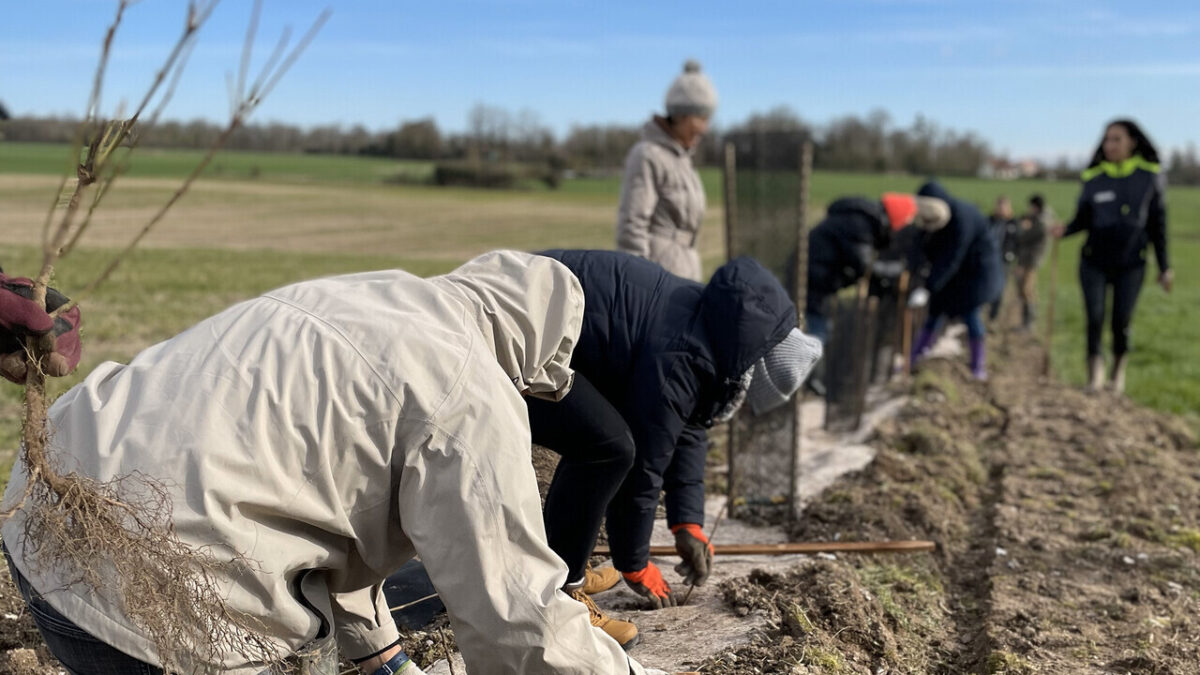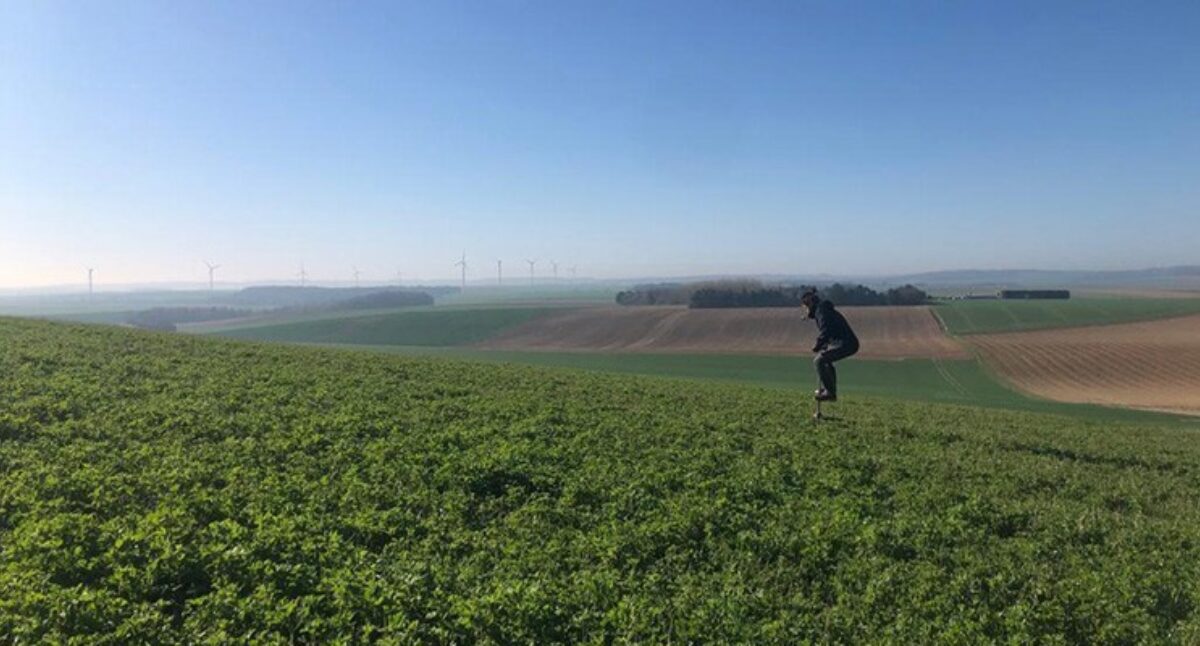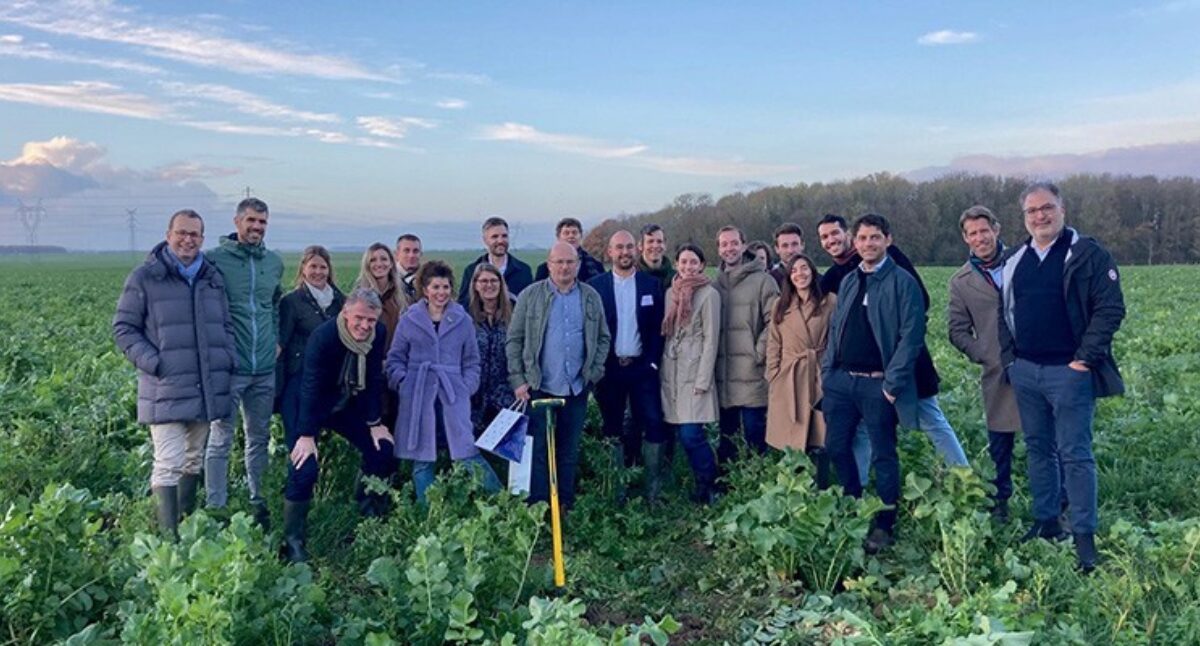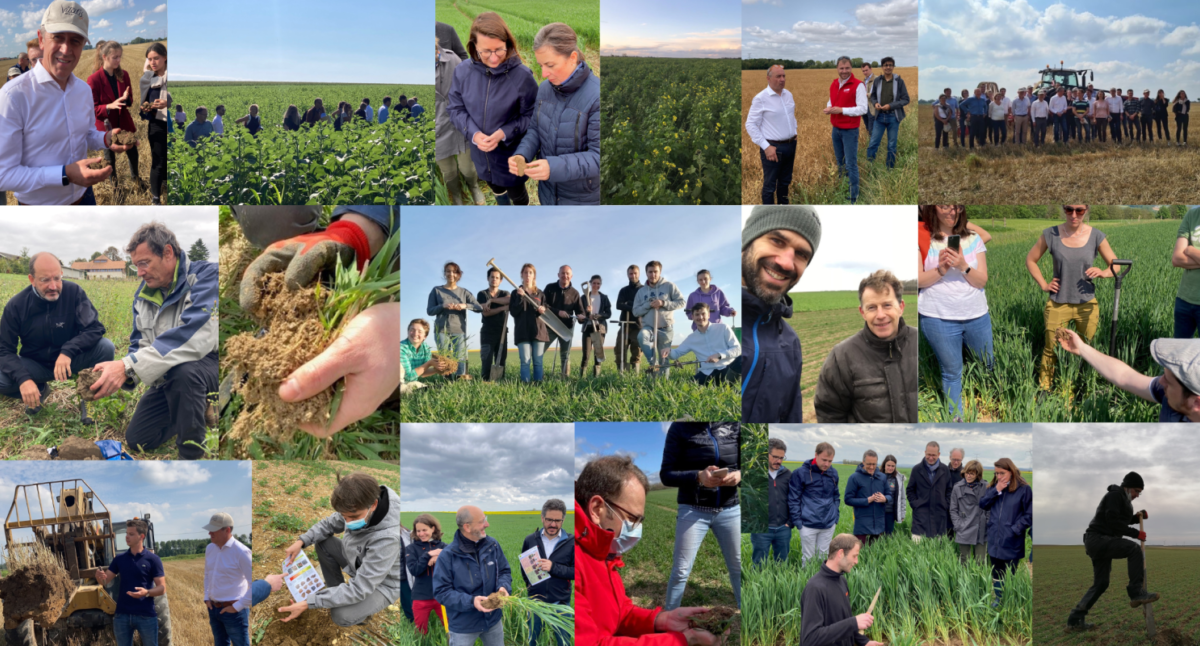An opinion piece by Bastien Sachet, Earthworm Foundation CEO
5 min read
Recently, I had the privilege of catching up with partners, farmers, cooperatives, and many others at the 60th edition of the Paris International Agricultural Show.
A fantastic opportunity to share progress and ideas but also to take a step back and reflect on some of the lessons learnt since we launched our Regenerative Agriculture program at Earthworm Foundation six years ago.
We launched our Living Soils ("Sols Vivants" in French) program in 2018 based on the conviction that the interests of farmers, businesses and society can be aligned.
And that we could do it around soil health.
A common denominator, soil has the power to bring people together: it's the farmer's main asset, it's our best filter for water, it stores carbon, is home to more than 25% of our planet's biodiversity, and of course, it makes our food taste great!

To us, productive agriculture is needed to feed a 10 billion people planet but can be practised in ways that regenerate the health of soils, increase biodiversity, reduce pollution, improve water quality, and capture vast amounts of carbon.
Call it "ecologically intensive", "regenerative", "agroecological", or something else; at the end of the day, it's all about working with Nature, not against it.
We decided to co-design a common way to look at regenerative practices at the system/farm level with scientists, farmers and companies.
Soil health indicators, carbon capture, biodiversity… we believed it would be possible to align everyone around such a framework of indicators – and unify how we collectively look at the environmental performance of a farm.
Today, we've tested and rolled out these indicators in the field with more than 500 farmers, 20 suppliers and cooperatives, traders, leading brands, and academics and researchers.
The challenges we met along the way were many: organisations applying conflicting specifications for regenerative agriculture; companies using different tools to measure the same thing (e.g., carbon); or people seeing regenerative agriculture as a new 'dogma'.

But what has perhaps been the greatest challenge is defining indicators that make sense for both the brands and the farmers.
While brands are more reporting-focused, farmers are understandably more focused on piloting their systems. Brands are interested in the emission factors of their production; farmers are interested in the structure of their soil and the amount of organic matter it contains.
At Earthworm, we believe that no one should impose their own perspective on the other. It needs to work for everyone. The work of (the) Earthworm here has been and will continue to be – as it does in the soil with nutrients and organisms – to create collaboration channels between farmers, suppliers, and brands.

Despite the challenges, we've been amazed by the willingness of even big corporations to work collectively and overcome the traditional corporate barriers, sharing ideas, data and pilots without fear. We've been impressed, too, by their readiness to learn. I remember Nestlé France's top leadership team decided to upgrade their agricultural knowledge through an ISARA Lyon program. And off they went in the field, changing their shirts and loafers for boots and raincoats, touching earthworms, chatting with farmers and learning about one another. But also sharing data, ideas and learnings with peers and competitors.
We've been humbled, too, by the farmers' willingness to engage in discussions with companies openly, everyone recognising that it is our shared responsibility to address the current environmental challenges despite the commercial tensions that exist and have been recently salient across Europe.
Overall, there's also been a general sense of humility in the face of what we don't know about how the soil and the natural environment as a whole function.
What impact will bringing back a certain cover crop species have on the soil? What type of cover crop works best on my farm? No one really knows for sure. And it's not the same everywhere.
We are at the beginning of re-discovering how Nature, its microorganisms, fungi networks, etc., work together. Most of this knowledge is being created by farmers and formalised by science. It's empirical knowledge. Everyone recognises that we don't know much, and we'd better listen to one another. It's very inspiring and refreshing to work in this environment.

Fast forward six years, and we are now part of a very exciting project – TRANSITIONS – led by one of the largest French cooperatives: Groupe VIVESCIA . 18 months in the making, it builds on what we have been working on to date on soil and agriculture, together with Vivescia's own expertise, resulting in a program tailored to its farmers and the context they work in.
In France and Europe, it's the first of its kind scale-up regenerative agriculture project. It will initially impact 1,000 farmers over three years and many more in the following years.
The fundamentals of the program are based on a systemic approach. 'Systemic' in the sense that the focus is on the whole farm/crop rotation rather than a single crop. To be more specific, the focus is on soil health, habitat for biodiversity, carbon capture/emissions, and producing similar yields with fewer fossil and chemical inputs.
Again, we find this same philosophy of a set of indicators to look at the whole farm, not just crop by crop.
If we were to compare this to the healing work of a doctor, it would be about moving from therapies focused on fixing the symptoms at the organ level (heart, liver or other) to more holistic, whole-body-focused therapies (nutrition, sleep, stress reduction, etc.). In practice, on the farm, it's more about tackling the root causes of what makes plants sick than healing the plants themselves when they are already sick.
And at the end, it's a more efficient way to farm, one that is less dependent on fossil fuels and chemical inputs.
Of course, it's never one or the other.
But the observation many farmers make is that once you start cultivating life in your soil as a primary objective (just as we could think of reducing stress and inflammation in your body as primary objectives), many positive things unfold, and Nature retrieves its balance. A farmer we work with was telling me that thanks to improved soil health practices, he's managed to completely eliminate the anti-slug pesticides he'd systematically used for decades.
Everyone understands what a systems approach means at the farm level. Now, you can only enable that if the environment to which that farm is connected also takes a systemic approach. By "environment", I mean the connected stakeholders: buyers in the Value Chain, the regulatory environment, the agronomists training the farmers, the seed industry developing more resilient leguminous varieties, and so on.
But that's not a natural thing to do. As a brand, you want your cocoa or wheat to be "low carbon" or “regenerative". Often it translates into a number of specifications that are then imposed in a top-down way onto the farmer. And as the farmer produces many crops for many buyers, it becomes quite a headache to put all those requirements together…
It’s that systemic approach that’s being taken up in the TRANSITIONS program.
After years of piloting regenerative agriculture practices with leading farmers and highly skilled teams, Vivescia decided to push that idea of systemic change at scale on farms. Together, we worked on designing a model that could address both the technical and financial challenges of supporting farmers in their transition towards regenerative agriculture.
For the first time, five of the leading sugar, wheat, barley and vegetable oils industry players agreed to partner and take their share of the cost.
(Avril, SEDAMYL Malteurop Roquette Tereos Grands Moulins de Paris Délifrance Kalizea)
Now, some of their largest brewer clients are also jumping on board. To support systemic change, they agreed to commit to paying a premium for three years.
As a result, farmers will receive between EUR 100 and 150/ha per year to ramp up their transition.
For 1,000 farmers, it adds up to a significant amount. But it's also not such an expensive solution to tackle climate change, droughts, floods, food quality, soil health, farmer resilience, food sovereignty and many other issues at once!
In summary, what have we learnt? These six years of work have helped us put together key ingredients for change:
1. Nature is a complex system. A systemic approach is therefore needed to tackle the carbon, water, and biodiversity crisis our world faces. It's not just about carbon!!! Nature doesn't work like that. Soil brings all of these elements together.
2. In Nature, species compete but also collaborate. In society, companies can do the same! Working on crop rotation and at the landscape level is a way to foster collaboration because all stakeholders need to play their part in achieving a common goal and can’t succeed alone.
3. Scaling up means putting money in the hands of the farmers: if regenerative agriculture becomes another label that the consumer has to pay for, it’s not going to go very far.
We should look at the transition as an investment rather than a cost. Just like companies invest in updating their factories and equipment, so too is regenerating soils, which is an investment in our shared resources.
Now, what’s next for regenerative agriculture at Earthworm?
We have ambitious targets to continue to scale up systemic change in the value chain. The success of our regenerative agriculture program is based on listening and co-creating with companies, farmers, suppliers, scientists, governments, and agronomists, and most importantly, on keeping it practical. We intend to continue to do just that.
Concretely, we will build collective projects with supply chains in key landscapes that allow the scale-up of regenerative practices. We will accelerate our agroforestry program as it complements the work done on soil health. We will do so while acknowledging and working through the tensions between, on the one hand, the needs of farmers and their living systems and on the other hand, the rules of the industry, between the pressure on price and the requirement to be producing sustainably; between the push for global impact, and local constraints.
As always, like the earthworm, in between two worlds, into the unknown.
And if you are keen, with you.
Bastien Sachet
CEO, Earthworm Foundation
Thank you to our partners: Agora coopérative agricole , Agro-Transfert Ressources et Territoires , Bel , Bimbo QSR Bonduelle , CAVAC , Chambre d'agriculture du Nord - Pas de Calais , Dijon Céréales , ECOM Agroindustrial Corp. Ltd. Eureden , General Mills , GreenSol , Groupe Carré - Négociant en grains Haute école du paysage, d'ingénierie et d'architecture de Genève - HEPIA , HES-SO Haute école spécialisée de Suisse occidentale , Herta France , HSBC , ICOSYSTEME ISARA Lyon , KERMAP , LABEYRIE FINE FOODS , @LaFermePilote , @Leroux , Lidl France , LinkUp , @Lurberri, McCain Foods , McDonald's France , Nestlé , Nestlé Purina PetCare Europe , Nestlé Health Science GROUPE NORIAP , Novalis Terra - Agriculture , Groupe Oxyane , Pascal Boivin , PepsiCo , pladis Global Saint Louis Sucre ; Soufflet Agriculture , TERRES INNOVANTES LE FONDS DE DOTATION DES JEUNES AGRICULTEURS , Unéal , Valfrance coopérative agricole , Groupe VIVESCIA Afac-agroforesteries des Hauts-de-France CHAMBRE REGIONALE D'AGRICULTURE HAUTS-DE-FRANCE Planteurs Volontaires Initiatives Paysannes Hauts-de-France @PERI G @PépinnièresCRETE ESA, L'Ecole supérieure des agricultures Région Hauts-de-France
